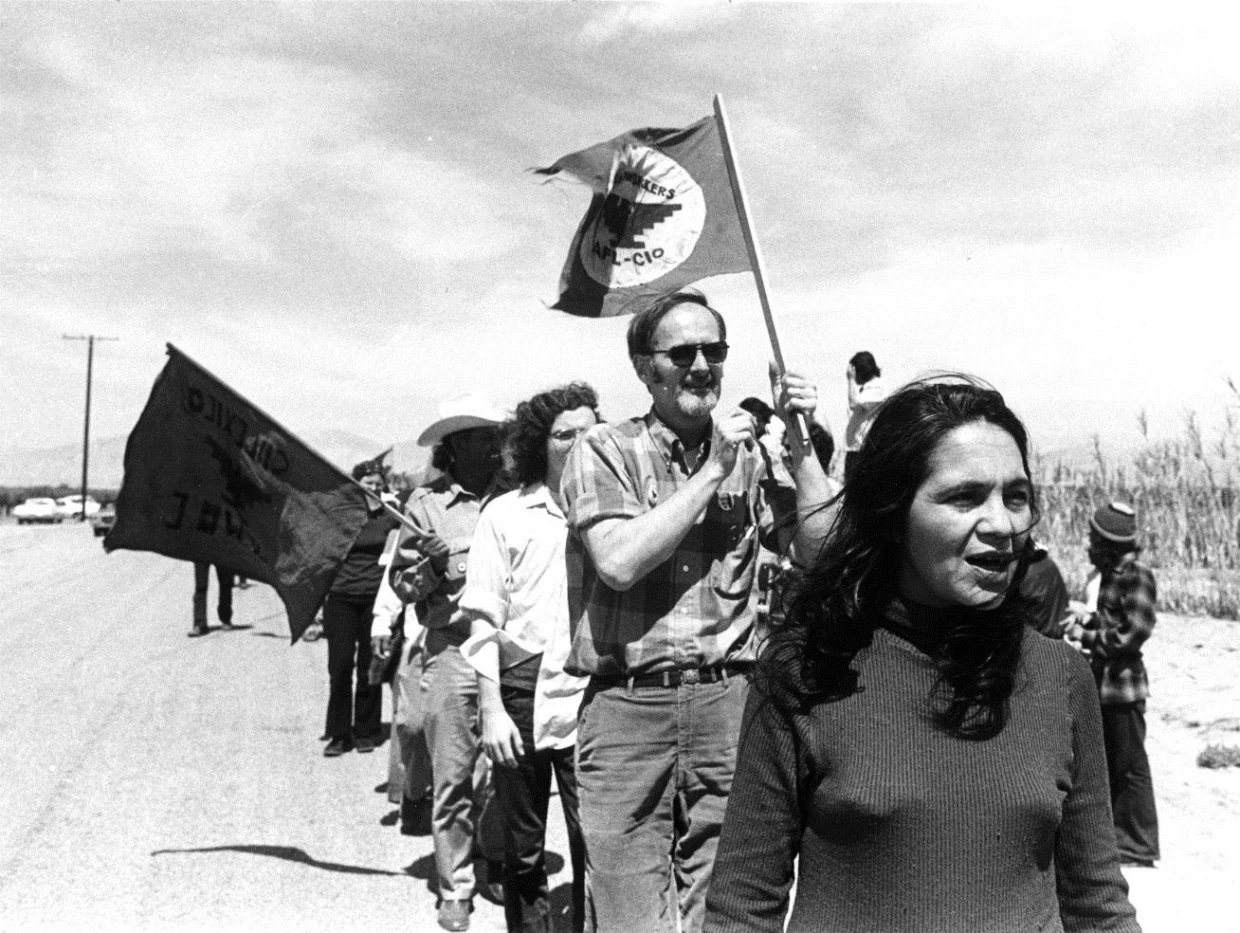After Repatriation: New Migrations, Same Backlash
The last repatriation train left Los Angeles in 1939, as the economic contractions of the early 1930s slowed. Within a few years, the United States—now on a wartime footing—was once again hungry for migrant labor.
New migrant programs aimed to balance the need for more workers against concerns about permanent immigration and its possible effect on American workers.
Bracero Program
The Bracero Program began in August 1942, when the United States signed an agreement with Mexico to allow farmworkers to enter the US temporarily to assist with the sugar-beet harvest season.
Over the next two decades, the Bracero program—a Spanish-language term for a manual laborer—would become the largest foreign worker program in US history. From 1948 to 1964 (when the program was terminated), the US admitted about 200,000 “braceros” each year, offering employment contracts to 5 million Mexican workers across 24 US states. It became the largest foreign worker program in US history.
The program was intended not only to supply an agricultural workforce, but also offer worker protections for Mexican migrants. Laborers admitted under the program were guaranteed access to shelter, food, sanitation, and paid a minimum wage of 30 cents an hour—a part of which was to be delivered into a private savings account in Mexico.
Nonetheless, many Mexican Braceros encountered discrimination and exploitation. From the moment they stepped across the border, braceros were required to pass a series of invasive examinations at over-crowded reception centers. They experienced unfair overcharges for room and board, deducted pay, and were routinely exposed to harmful chemicals. In Texas, the maltreatment came to a fore when several Mexican Braceros were lynched in the 1940s, prompting the Mexican government to ban the state’s Bracero program for several years to protect its citizens against such harassment.
The limits placed on the Bracero program meant that demand for workers outstripped the Bracero supply. Many farm managers were willing to hire cheaper, undocumented laborers, and many of those rejected by the formal Bracero program were willing to cross the border clandestinely and accept exploitative employment offers. And, although the Bracero workers were only issued temporary visas—meant to return to Mexico once their labor contracts expired—many chose to overstay, joining the number of unauthorized or “illegal” immigrants working in America’s fields.
Mexican agricultural laborer topping sugar beets in Stockton, CA. Marjory Collins, photographer.1943.
Operation Wetback
By the mid-1950s, popular concern about unauthorized crossings—as well as complaints from labor unions and churches about undocumented migration undercutting workers’ agreements—prompted the Immigration and Naturalization Service (INS) to launch Operation Wetback in June 1954. Named for a derogatory term that referred to Mexican migrants who swam across the Rio Grande to enter the US illegally (and so have a “Wet Back”), Operation Wetback used military-style tactics to round up and deport laborers back to Mexico. Deportees were often dumped in unfamiliar parts of the country without food, shelter, or any means of contacting their families. In the first year, over a million Mexicans were sent back to Mexico, the number totalling 3.8 million when the operation was finished.
The Bracero program ended in 1964, after significant pressure from farm workers' unions, and other critics concerned that the program undercut wages for workers from the US. However, even after the Bracero Program ended, farms in the West and Southwest continued to rely on Mexican labor.
The twenty years of the Bracero program enabled Mexican migrant workers to establish roots in the United States. They developed networks north of the border that eventually helped them to transition into non-agricultural jobs in cities.
Farmworkers Movement To Chicano Rights
The United States had admitted Mexicans and Mexican Americans because it wanted workers. But it “got people instead”. The US-born children of Mexican migrants were American citizens, but continued to face discrimination. Cesar Chávez was one such second-generation Mexican Americans, who grew up in a migrant farmworker family and experienced the grueling conditions of that lifestyle firsthand. On the coattails of the civil rights movement, young Latinos started to demand change. They became known as the “Chicano” movement – a broad coalition of activists across the United States demanding not only equal rights for Latinos in mainstream American society, but also encouraging the formation of a distinct cultural identity. This movement took on a name that had long been a racial slur—chicano—and wore it with pride.
“We are men and women who have suffered and endured much and not only because of our abject poverty but because we have been kept poor,” Chávez wrote in a 1969 letter from Delano. “The color of our skins, the languages of our cultural and native origins, the lack of formal education, the exclusion from the democratic process, the numbers of our slain in recent wars—all these burdens generation after generation have sought to demoralize us, we are not agricultural implements or rented slaves, we are men.”
Chávez, alongside Dolores Huerta and other Chicano activists, founded a national union defending the rights of farmworkers through nonviolent organizing tactics like marches, consumer boycotts, and fasts. They attracted national attention and won higher wages and improved working conditions, in turn galvanizing a wider Chicano Movement.
By the late 60s, Chicano rights activists shirked the pressures to “blend in” and assimilate, instead choosing to actively embrace their full heritage. While Anglo Americans (like the “Mother of Olvera Street,” Christine Sterling) had highlighted Mexico’s roots as Spanish/European, Chicanos now also celebrated their Indigenous and African heritage.
Agricultural Workers Organizing Committee members picketing in front of Filipino Community Hall as part of the Delano Grape Strike on September 24, 1965.
© Harvey Richards Media Archive
Dolores Huerta at California demonstrations. Wayne State University
Prop 187
Entering the 1990s, California was in the middle of a turbulent economic recession. Once again—just as the Hoover administration had pointed fingers during the Great Depression—immigrants became scapegoats. In 1994, California’s Republican Governor Pete Wilson faced a tough reelection campaign. A strong stance against immigration was a key part of his platform; he ran ads of video footage of people running across the U.S.-Mexico border with the tagline “They keep coming.”
That same year, California voted to pass Proposition 187—known as the Save Our State referendum— restricting undocumented immigrants from access to the state’s public services, including public education and healthcare. It also empowered teachers and healthcare professionals to report individuals suspected of being undocumented to the Immigration and Naturalization Services (INS).
It was a short-term victory for California conservatives. Latinos, whose vote had previously been split across party lines, vociferously opposed the proposition. Many Latino immigrants felt the bill was a direct attack and left the Republican Party. Over the next several years, there was a surge in voter registration for the Democratic Party. Today, Prop 187 is largely credited as the catalyst behind California’s pendulum swing, becoming one of the most solidly Democratic states in the nation. Today California is also a sanctuary state, where no child can be deprived of an education or health care due to their birthplace.
Students from Belmont High on the steps of L.A. City Hall after walking out of school to protest Proposition 187 in November 1994. (Bob Carey / Los Angeles Times)
Want to Learn More?
A Latinx Resource Guide: Civil Rights Cases and Events in the United States, Library of Congress
Do immigrants “steal” jobs from American workers? Brookings Institute.




